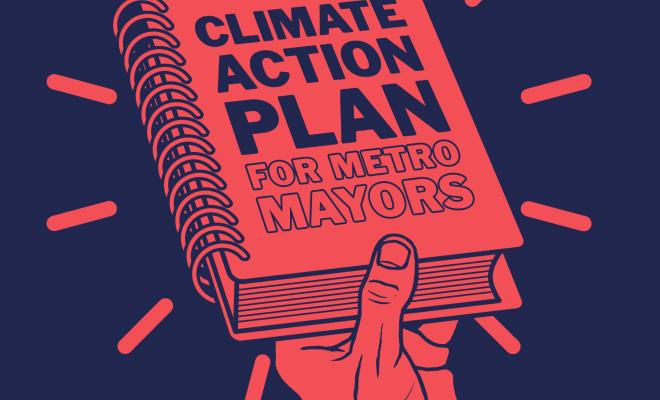24 Jan 2025
What can the new Mayor do for people and planet?
We're facing a climate and ecological emergency – the biggest threat we’ve ever seen to humanity’s existence. Whoever is elected as the new Mayor of Greater Lincolnshire can’t single-handedly solve the crisis, but they must use the powers they have to make as big a difference as possible. They have a very important role to play in providing a guiding vision for the area, and will need to work with councils, businesses, local communities and the national government.
The constituent councils that make up the new Greater Lincolnshire Combined County Authority (GLCCA) have existing climate plans in place, but with varying targets and levels of commitment to the actions required. Compared with other county councils, Lincolnshire County Council scored very poorly according to analysis by Climate Emergency UK. North Lincolnshire Council scored below the average for single tier councils, while North East Lincolnshire had an average score overall but performed well on buildings and poorly on transport. It’s clear that the new Mayor will need to take a leading role in co-ordinating and accelerating climate action across Greater Lincolnshire. This Climate Action Plan will help them do this using the devolved powers and funding granted to them.
How green is Greater Lincolnshire?
10 priorities for the new Mayor
- Ensure all plans, programmes and investment decisions are in line with what’s needed to address the climate and ecological emergency and are aligned with international, national, regional and local carbon reduction targets.
- Ensure that the voices of those most impacted by climate breakdown and nature loss are heard and given centre-stage in decision making.
- Support new green jobs. Protect workers and communities through a just transition to a low-carbon, nature-rich, circular economy, including linking skills training to low-carbon jobs.
- Ensure new development is zero carbon and served by sustainable transport using their influence on constituent local planning authorities. Use brownfield regeneration and affordable housing funding to deliver zero-carbon homes in locations accessible by public transport and active travel.
- Take a leading role in accelerating action to bring existing homes and buildings in the area up to high energy efficiency standards (EPC rating C) to reduce emissions and put an end to fuel poverty. Ensure that existing homes, buildings and infrastructure are protected from extreme weather events.
- Set targets and strategies to at least double public transport use and increase walking and cycling fivefold in 10 years. This includes improving the quality, connectivity and affordability of public transport services, with a rapid move to bus franchising as a key measure to restore bus services to at least 2010 levels.
- Lead the development of a Local Area Energy Plan (LAEP) to increase the supply of clean, renewable energy, including support for community energy initiatives and the roll-out of heat pumps. Avoid carbon capture and storage (CCS) and hydrogen as far as possible.
- Ensure that the Local Nature Recovery Strategy (LNRS) for the area increases tree cover, protects and enhances nature, eliminates green space deprivation, and helps the area become more resilient to the impacts of climate change.
- Lead the development of a circular economy strategy for the region with local businesses and local authorities to both cut waste and resource consumption and boost the green economy, including encouraging alternatives to cement in construction.
- Use their convening role with Defra and the UK Food Valley partnership to ensure the sustainability of food production in Lincolnshire, including enhancing flood protection and resilience.


